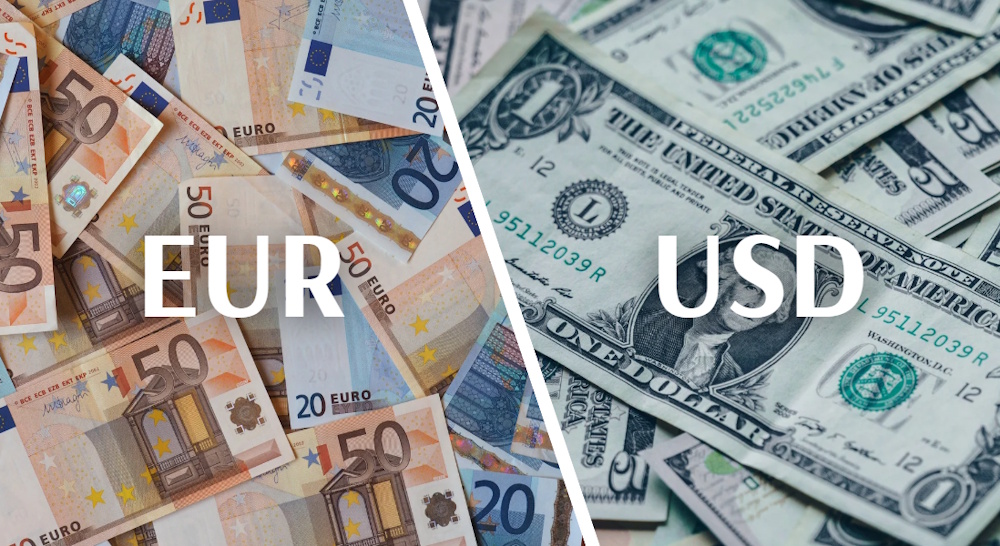The EUR/USD pair was observed trading close to 1.1380 towards the end of the week, remaining above the monthly low of 1.1347, as market participants weighed the impact of strong U.S. inflation expectations against the backdrop of slowing growth indicators in Europe. The pair maintains its adherence to the positive slope of the 50-day moving average at 1.1283; however, momentum appears subdued as market participants anticipate forthcoming macroeconomic indicators from the U.S. Consumer Price Index and the FOMC minutes set to be released this week. The U.S. Dollar Index concluded the week in a tight consolidation range, experiencing a decline following an unsuccessful effort to maintain its upward trajectory above the 106.00 level. Despite a technical slowdown, the broader picture indicates the market’s uncertainty regarding the Federal Reserve’s policy direction. Chair Jerome Powell emphasized that the central bank is “well positioned to wait for greater clarity before considering any adjustments,” suggesting that a rate cut is improbable until there is clear evidence of slowing inflation.
The U.S. Job Openings data exceeded expectations slightly, whereas the ISM Services PMI experienced a minor decline to 51.1, indicating a mixed economic environment. The forthcoming CPI report is anticipated to indicate an annual headline increase of 3.4% and a core measurement close to 3.8%, which may influence the direction of the EUR/USD pair. An improved reading would probably elevate Treasury yields and exert downward pressure on the euro, pushing it closer to 1.1280. Conversely, a weaker inflation surprise might strengthen dovish expectations and drive the pair up to 1.1570, its peak from April. The European Central Bank is currently maintaining its position following the recent meeting, which confirmed its cautious approach moving forward. President Christine Lagarde expressed a measured sense of optimism regarding the easing of inflation, while underscoring the necessity for continued progress prior to considering any rate reductions. In light of the ECB’s cautious approach, the Eurozone’s manufacturing and services PMIs continue to show weakness, with the composite index just above 50, indicating a lack of robust activity. The decline in Germany’s industrial output by 0.4% month-over-month, coupled with weak export data, has negatively impacted sentiment, despite the euro maintaining its strength against a mixed dollar. The ongoing uptrend in EUR/USD that began in early 2025 continues to hold firm, supported by the relative strength of the euro against major pairs, including EUR/JPY, which has recently surpassed 173.00, reaching multi-year highs.
From a technical perspective, EUR/USD has primarily been consolidating over the past week within the range of 1.1390 and 1.1440, which aligns with the 78.6% and 61.8% Fibonacci extension levels. A decisive break below 1.1347, the current monthly low, may expose the pair to the next support cluster between 1.1260–1.1280, followed by a stronger floor around 1.1170, which aligns with the 50% Fibonacci retracement from the April–June rally. On the upside, buyers need to overcome resistance at 1.1495 to reclaim short-term dominance, paving the way towards 1.1560 and ultimately 1.1617, the high from November 2021. Price action continues to be constrained beneath 1.1500, indicating that the bulls are exercising caution even though the long-term uptrend remains in place. The emergence of an inside weekly candlestick featuring a lengthy upper wick indicates a state of indecision; however, it does not undermine the overall bullish framework. Market sentiment has become more complex and layered. Market participants seem hesitant to take strong positions in either direction, given the low volatility—merely around 15% of significant currency pairs experienced movements exceeding 1% last week. The euro demonstrates resilience due to anticipations that the Fed might be approaching the conclusion of its restrictive policy, whereas the ECB refrains from any premature easing measures. Nonetheless, the absence of a definitive breakout above 1.1500 underscores a market that continues to seek conviction.
The U.S. 10-year Treasury yield remained close to 4.22%, establishing a limit on dollar strength, whereas European yields have shown stability, with the German 10-year bund hovering around 2.34%. The tight yield spread suggests a gradual increase for EUR/USD; however, any unexpected movement from the U.S. inflation report could swiftly negate the pair’s advances. The overarching theme continues to focus on divergence. The U.S. economy, while exhibiting signs of moderation, remains ahead of Europe’s performance. Consumer confidence continues to be strong, and employment growth is consistent. The Eurozone is experiencing sluggish growth, highlighted by a contraction in consumer spending in Italy and France. However, the inflation differential has contracted, with European headline CPI at approximately 2.6%, whereas the U.S. stands close to 3.4%. The relative improvement provides the EUR/USD pair with a structural cushion above the 1.13 handle. The contraction of the ECB’s balance sheet and the ongoing runoff of corporate bonds have led to a reduction in euro liquidity, contributing to short-term volatility in the pair’s movements. The EUR/USD pair has reflected the trends in global risk assets, notably the S&P 500 and NASDAQ 100, which have both reached new all-time highs at 6,665 and 24,940, respectively.
The euro typically appreciates in risk-on environments, and this relationship has persisted as investors shift back into equities after the resolution of the U.S. government shutdown. Meanwhile, gold surged to an all-time high near $3,980, indicating a resurgence in demand for inflation hedges—a trend that has historically bolstered the euro during periods of rising inflation expectations. Should equity momentum diminish as a result of unexpected CPI figures or uncertainty surrounding interest rates, the EUR/USD pair may face increased pressure as investors turn to the safety of the dollar. The immediate trajectory is contingent upon the CPI data and the Federal Reserve’s communication. An improved inflation report may lead to a decline in EUR/USD, potentially reaching 1.1260, with additional downside risk extending to 1.1170 if momentum increases. Conversely, a weaker CPI release or dovish FOMC minutes may catalyze a bullish breakout above 1.1495, with initial targets set at 1.1573, followed by 1.1617, thereby completing a five-month consolidation breakout pattern.

